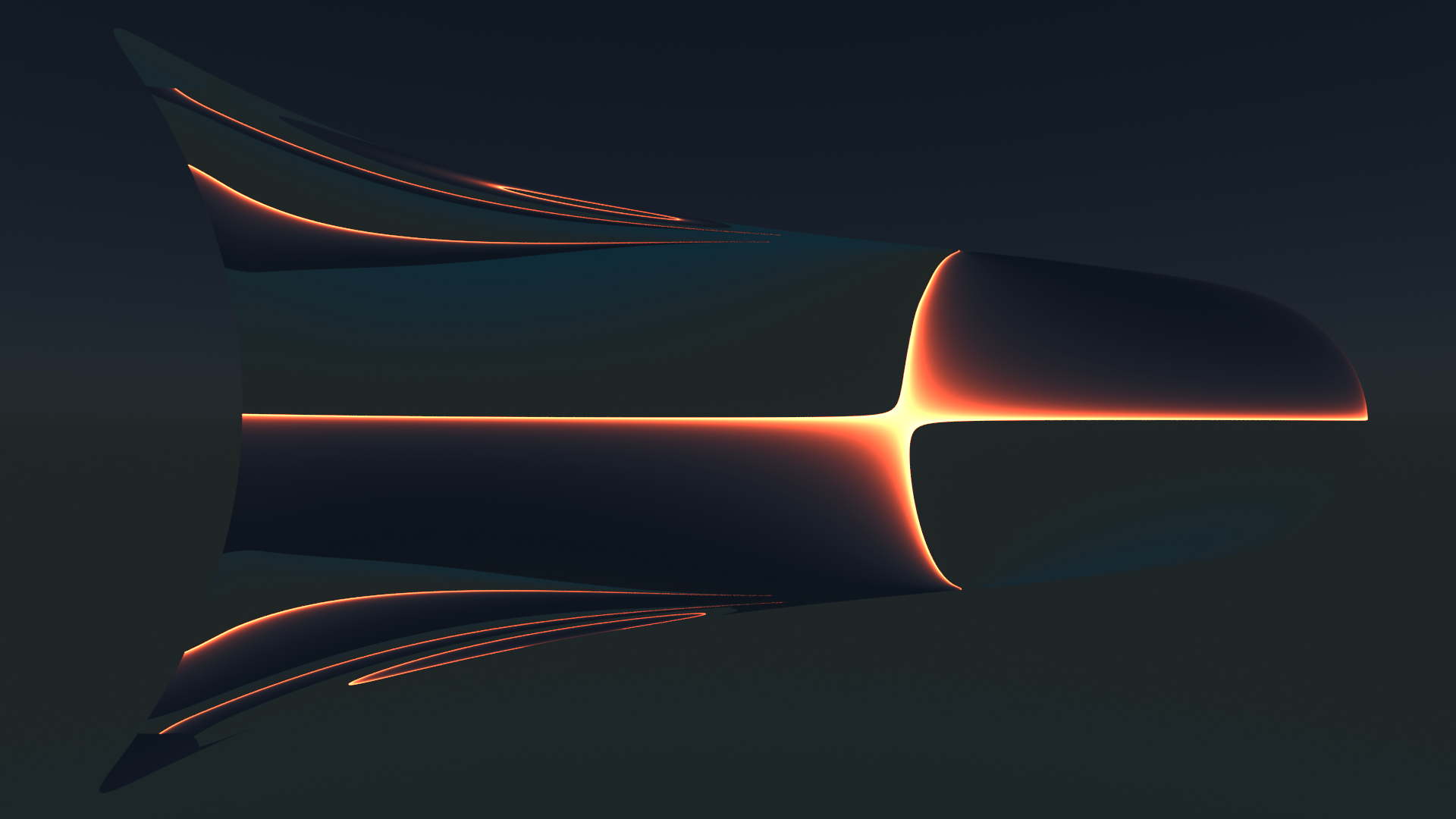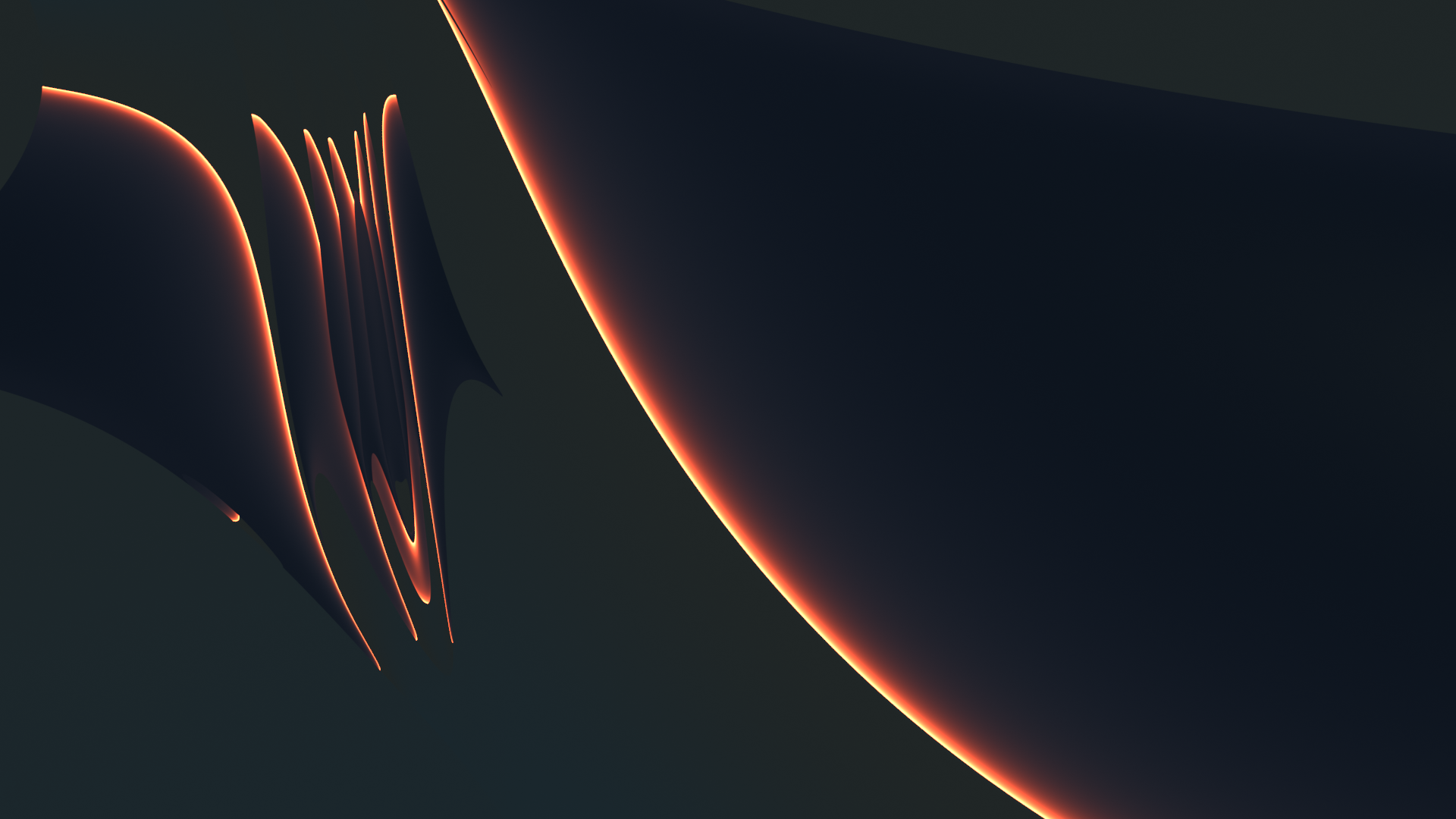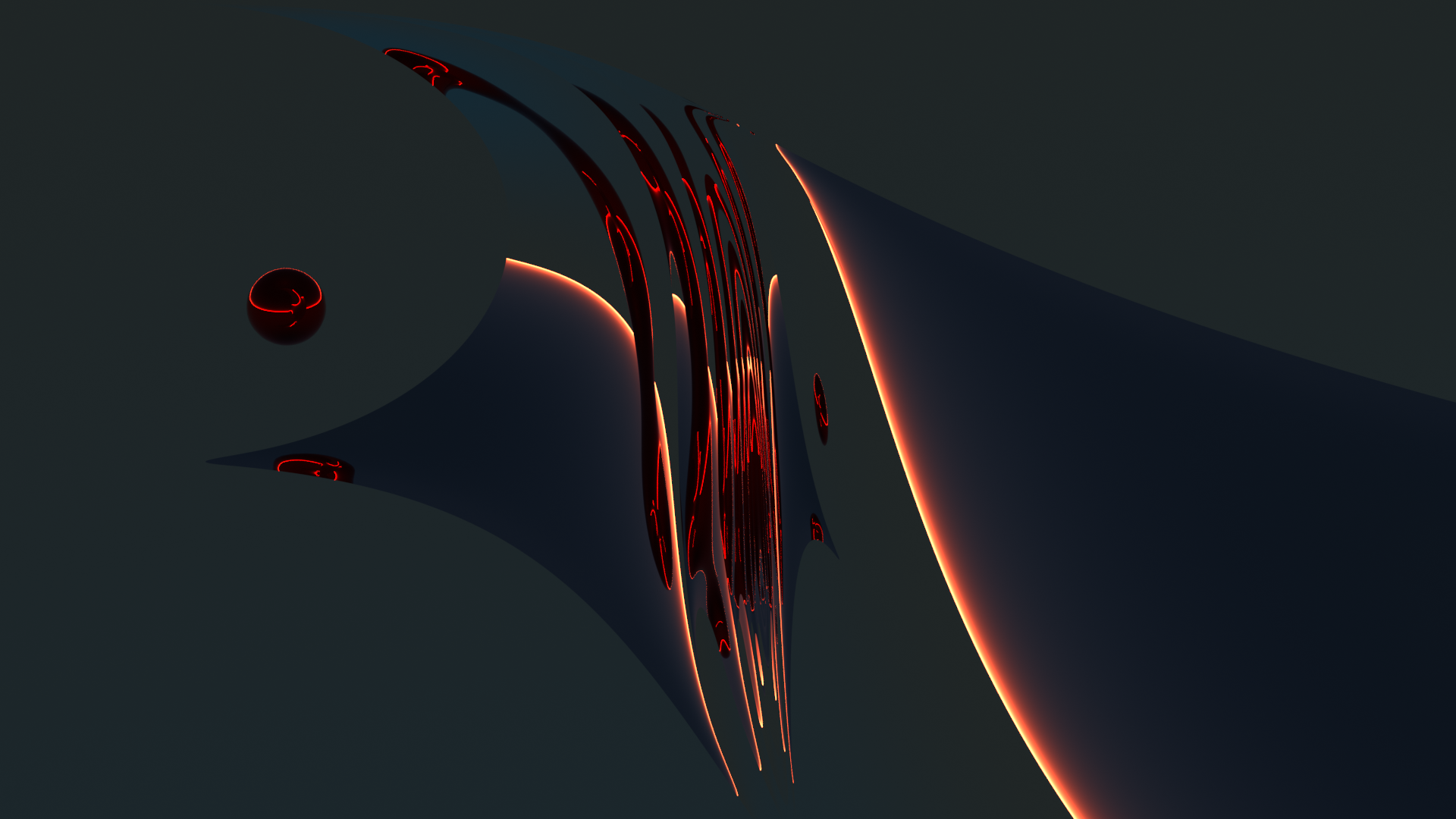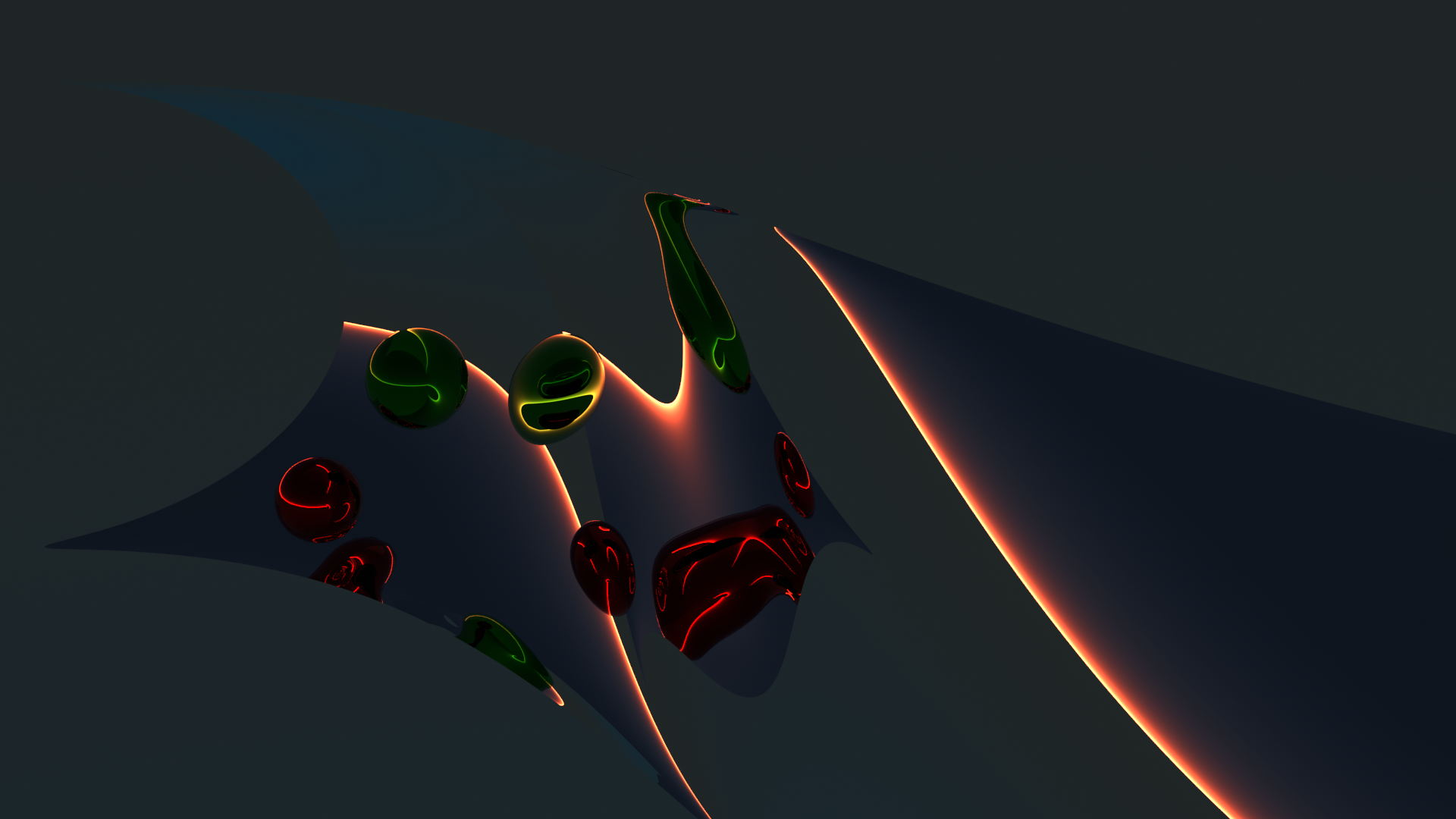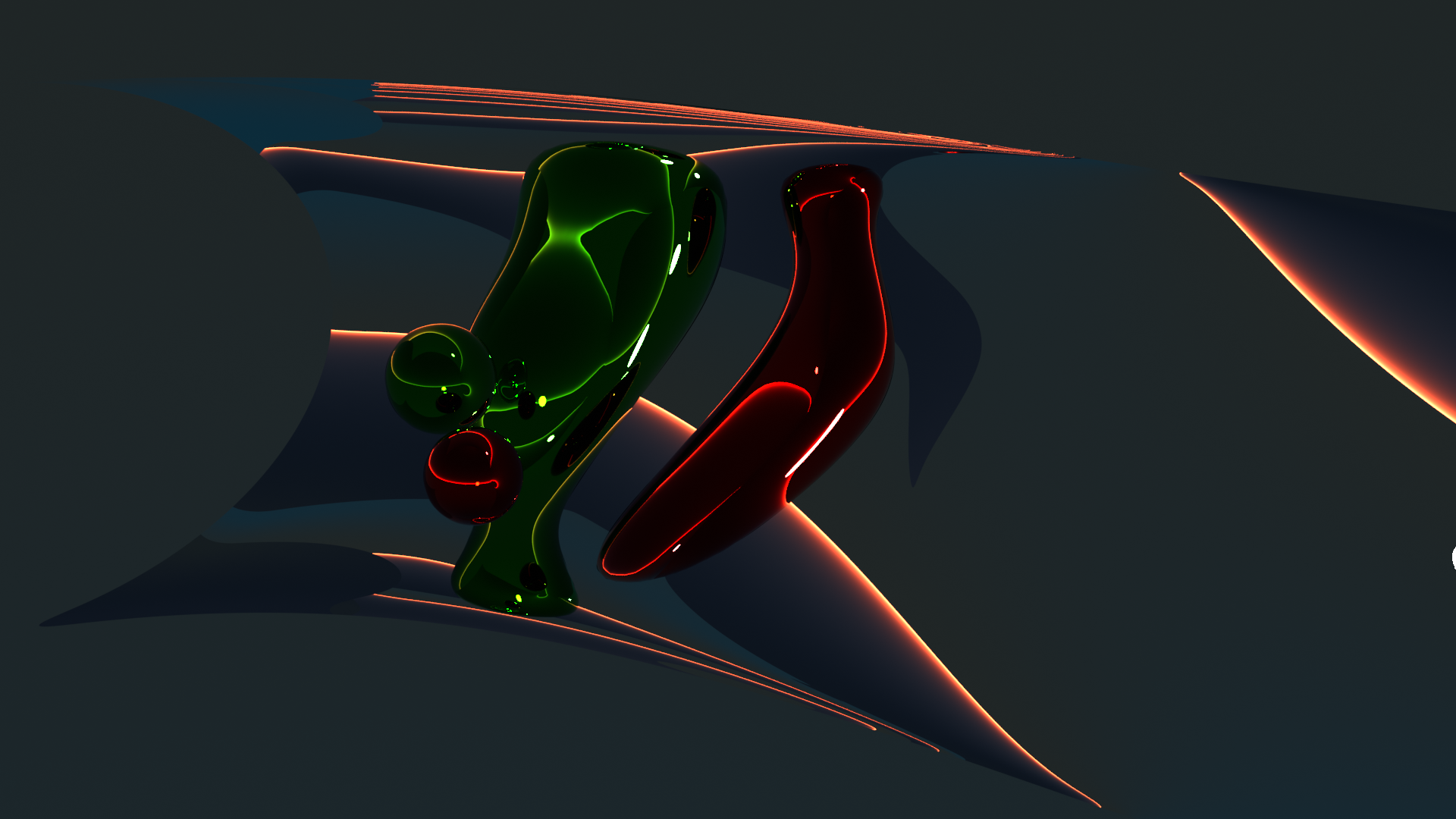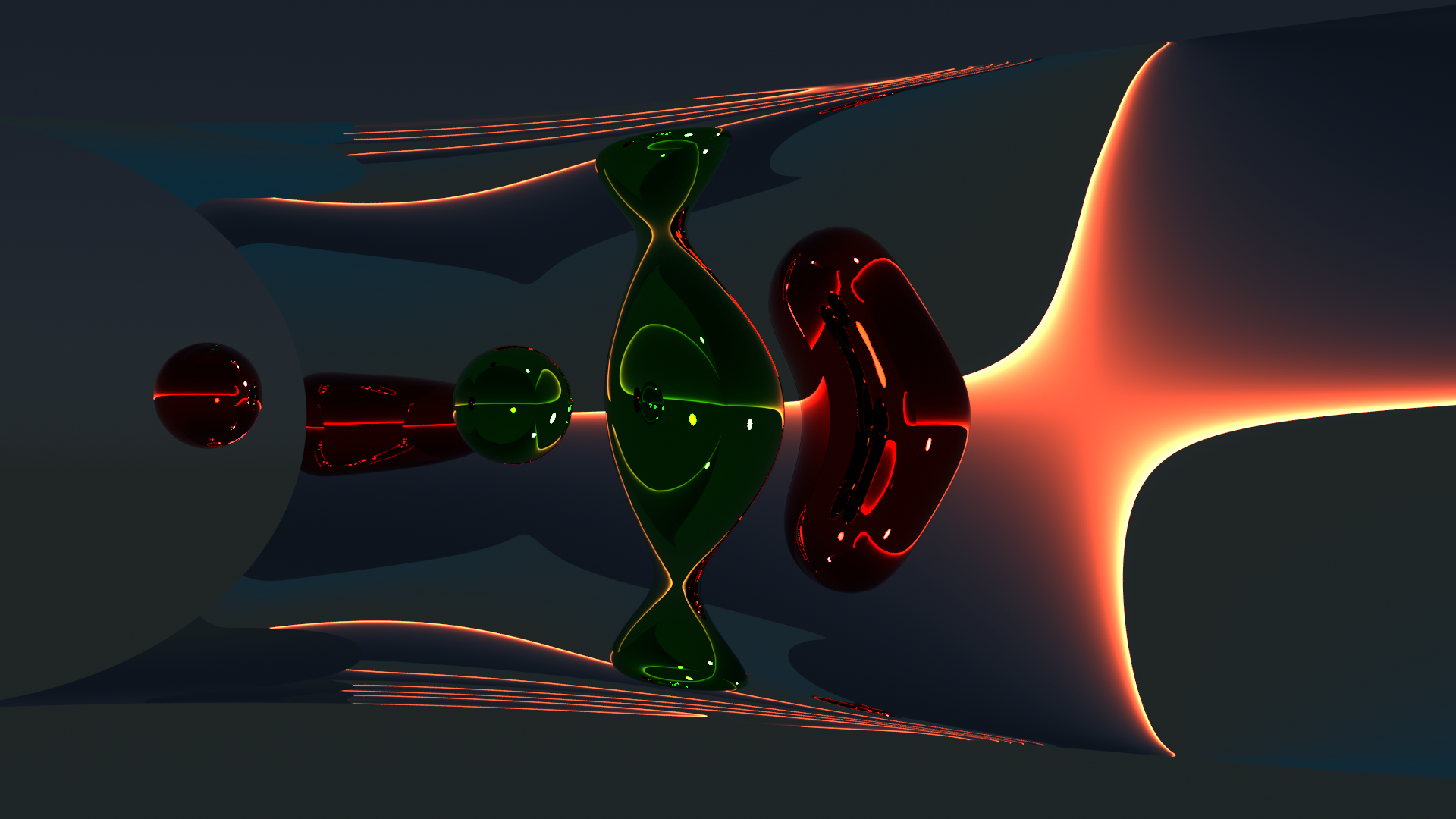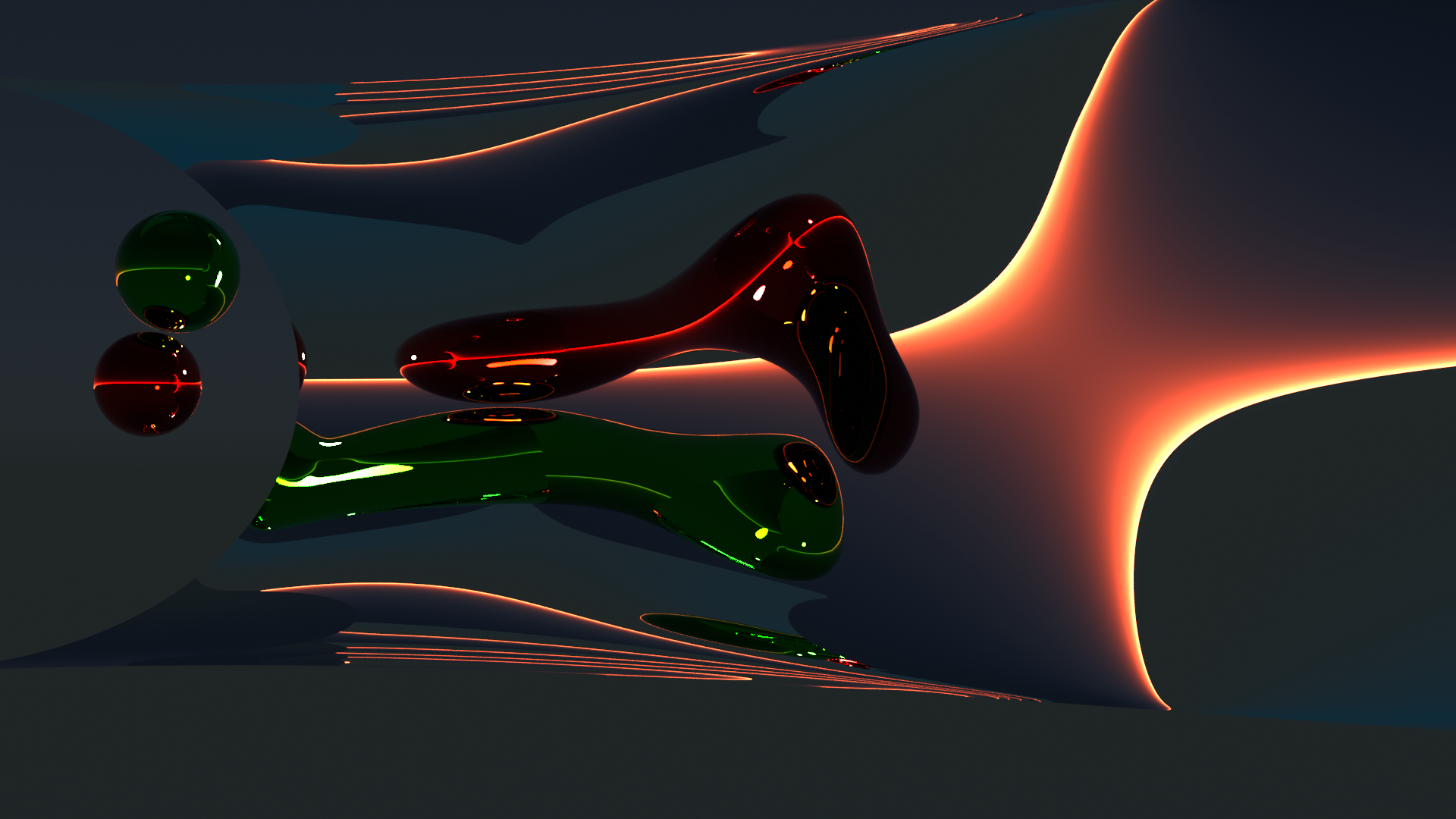The topic of the last post in this series
Blender – complexity inside spherical and concave cylindrical mirrors – I – some impressions
Blender – complexity inside spherical and concave cylindrical mirrors – II – a step towards the S-curve
Blender – complexity inside spherical and concave cylindrical mirrors – III – a second step towards the S-curve
was the construction of a metallic object with basic similarities to the “S-curve” of artist Anish Kapoor. Our object was a bit more extreme than the artists real object; we had a smaller curvature radii in two dimensions and on the outer ends our surface approximated a half circle boundary curve. We therefore could expect multiple reflections of light rays on the concave side(s) of our virtual object when applying ray tracing.
At the end of my last article I already presented some images of the reflection of a far distant horizontal line marked by a sun close to the horizon at dusk or dawn. In this article I am going to add some simple objects – a small red and a small green sphere at varying positions. Plus a point like light source. I take some shots with the virtual Blender camera form different angles and with varying focal length. I present the results below without many comments.
What we see is a rich variation of patterns and figures. Mathematically it is all the result from a single and simple mapping-operation. Each operation maps one point on our surface to another point on the S-curve (or on a hit sphere). The points are given by millions and millions of light rays which in the end reach our virtual camera from different angles. The basic message is:
Simplicity can create a complexity which or brain would not predict without some deeper analysis. And a complex apparition may be based on simple rules and the selection of special circumstances.
So, besides many other philosophical aspects Mr. Kapoor’s “S-curve” reveals a very fundamental idea in physics, certain branches of mathematics and in information theory.
Reflections of a horizon line
Reflections of a horizon line and a red sphere
Reflections of a horizon line, a red and a green sphere
Note that the concave side of the S-curve gives us a first idea about what we can expect from a full half-sphere where even more reflections on the surface are possible before a light ray reaches the camera.
But, in my next article
Blender – complexity inside spherical and concave cylindrical mirrors – V – a video of S-curve reflections
I am first going to produce a movie of objects moving in front of the concave part of the S-curve.

